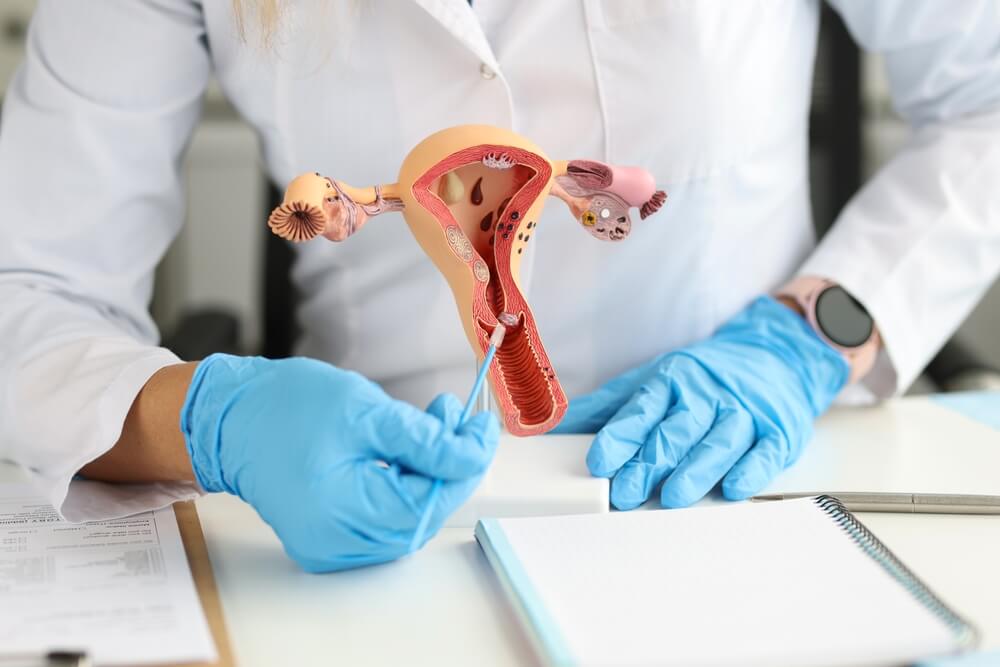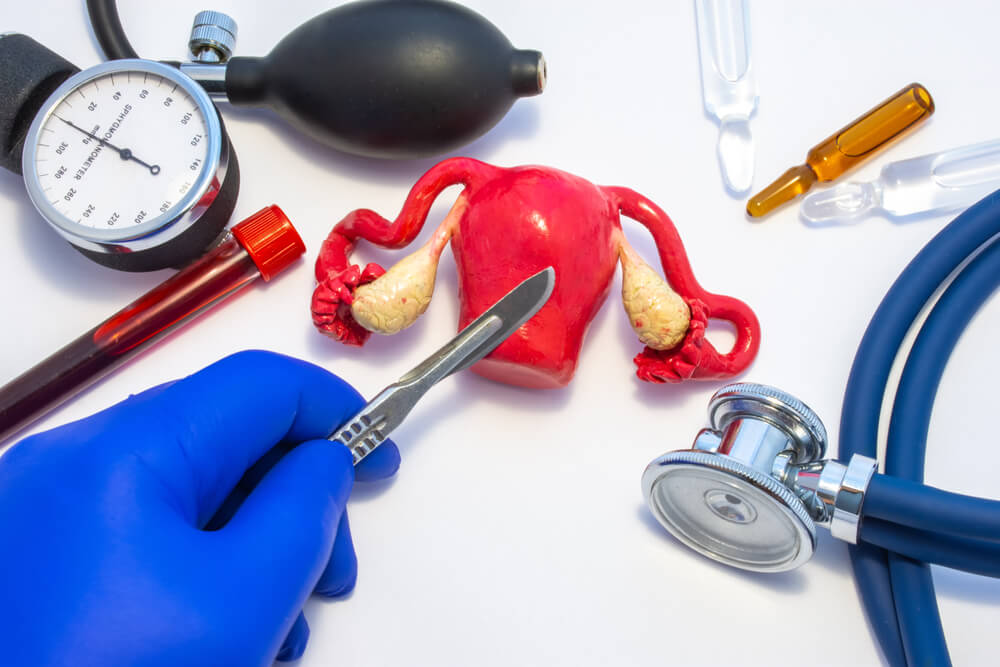What is a Hysterectomy?
Hysterectomy is a surgical procedure designed to remove the uterus and is often accompanied by the potential removal of nearby organs like the fallopian tubes and ovaries. This procedure renders a woman unable to menstruate (have periods) and incapable of getting pregnant. Uterus removal is a standard treatment for various conditions affecting a woman’s reproductive organs.
In this article, the experts at My OBGYN Specialists talk about the procedure, mention different types of interventions (like laparoscopic hysterectomy), and talk about the possible advantages and drawbacks of the procedure.
Prevalence of Hysterectomies

Hysterectomy is a prevalent surgical procedure, with approximately half a million performed each year in the United States. Following cesarean section, it ranks as the second most common surgical procedure for women. Most hysterectomies are conducted between the ages of 40 and 50.
Understanding Hysterectomy
Hysterectomy is a surgical operation involving the removal of the uterus, the organ responsible for fetal development during pregnancy. This procedure may also involve the removal of the cervix, the passage connecting the uterus and the vagina. The decision on whether to remove the ovaries and fallopian tubes during a hysterectomy depends on the individual patient’s medical condition and needs.
Variations of Hysterectomies
Different types of hysterectomies exist, and your healthcare provider will discuss the potential risks, benefits, and side effects associated with each option. The choice of which type to perform is influenced by the specific medical condition being treated. These variations include:
- Total Hysterectomy: This procedure involves the removal of both the uterus and cervix, while keeping the ovaries intact, making it the most common variety.
- Partial Hysterectomy: Also known as a supracervical hysterectomy, this method removes only the uterus, preserving the cervix. Ongoing research explores the risks and benefits of leaving the cervix intact.
- Radical Hysterectomy: Reserved mainly for cancer treatment, this comprehensive procedure involves the removal of the uterus, cervix, fallopian tubes, ovaries, the upper part of the vagina, and adjacent tissues and lymph nodes.
Duration of Hysterectomy Surgery
The duration of hysterectomy surgery typically ranges from one to four hours, depending on factors such as the type of procedure, the patient’s overall health, and the presence of scar tissue or additional structures to be removed.
Indications for Hysterectomy
Hysterectomies are recommended for various health concerns, including:
- Abnormal bleeding
- Uterine fibroids (leiomyomas)
- Severe menstrual pain (dysmenorrhea)
- Endometriosis
- Gynecologic cancers (uterus, ovary, cervix, endometrium)
- Heavy or prolonged menstrual bleeding (menorrhagia)
- Uterine prolapse, often combined with bladder repair
- Conditions affecting the uterine lining (e.g., hyperplasia, recurrent uterine polyps, adenomyosis)
Hysterectomy Approaches
Hysterectomy can be performed through different surgical approaches, each with its unique characteristics:
Abdominal Hysterectomy
This approach removes the uterus through a larger abdominal incision, often required in cases of cancer, an enlarged uterus, or conditions extending to other pelvic areas. It may involve a more extended hospital stay and recovery period.
Robotic-Assisted Laparoscopic Hysterectomy
This method employs robotic technology to assist the surgeon with recovery, similar to standard laparoscopic hysterectomy.
Laparoscopic Hysterectomy
A laparoscope, equipped with a camera, is inserted through small abdominal incisions. Surgical tools are introduced through these incisions, and the uterus can be removed through them or through the vaginal incision. Recovery is typically shorter and less painful compared to an abdominal hysterectomy.
Vaginal Hysterectomy
This procedure removes the uterus through an incision at the top of the vagina, avoiding external incisions. It is commonly used for nonmalignant conditions, offering a faster recovery with fewer complications.
Hysterectomy Recovery
Recovery after a hysterectomy can vary, but most women can typically expect to resume light activities within a few weeks and engage in more demanding activities within six to eight weeks. Complete recovery may take up to six months. During the recovery phase, it’s essential to:
- Rest and avoid heavy lifting.
- Abstain from sexual activity for a recommended period.
- Follow prescribed medications and maintain regular follow-up appointments with your healthcare provider.
- Engage in gentle exercises, as recommended by your healthcare provider, to promote healing.
Risks and Complications
While hysterectomy is generally considered safe, like any surgical procedure, it carries certain risks and potential complications, including:
- Infection
- Blood clots
- Adverse reactions to anesthesia
- Damage to surrounding organs or tissues
- Formation of scar tissue
- Postoperative pain or discomfort
- Changes in sexual function
- Menopausal symptoms if the ovaries are removed. It’s essential to discuss these potential risks with your healthcare provider before the procedure.
Benefits of Hysterectomy
The decision to undergo a hysterectomy should be made after careful consideration of potential benefits. For many women, these benefits include:
- Relief from conditions causing pain, bleeding, or other distressing symptoms
- Prevention or treatment of gynecological cancers
- Improved quality of life and emotional well-being
- Elimination of the need for contraception and management of menstruation
Emotional Impact

A hysterectomy can have a significant emotional impact. Many women experience feelings of loss or undergo changes in their self-image and body image following the surgery. Support from friends, family, and healthcare providers can be invaluable during this period.
Coming to terms with the emotional aspects of a hysterectomy can be a challenging journey. It’s not uncommon for women to experience a mix of emotions, including grief, anxiety, and even a sense of identity loss after the removal of the uterus. The impact on self-image and body image can be profound, as some women may feel their femininity is altered.
Having a strong support system is essential during this period of emotional adjustment. Friends and family can provide comfort and understanding, offering a listening ear when needed. Additionally, healthcare providers can play a crucial role in helping women navigate these emotional waters by providing resources and referrals to support groups or therapists specializing in post-hysterectomy emotional well-being.
It’s important for individuals undergoing a hysterectomy to remember that these emotional changes are a normal part of the process, and seeking professional support or simply sharing their feelings with loved ones can help in coping with the emotional challenges. Over time, many women find a renewed sense of well-being and a positive outlook on life post-hysterectomy, with the emotional healing process contributing to an improved quality of life.
Conclusion
Hysterectomy is a major surgical procedure with significant implications for a woman’s health and well-being. It should be considered carefully after thorough consultation with healthcare providers and an understanding of the potential benefits and risks. Women undergoing this procedure can anticipate relief from various health issues, but it’s also essential to address the emotional aspects and any concerns they may have. When considering a hysterectomy, it’s crucial to discuss your options and concerns with your healthcare provider and consider seeking a second opinion if necessary.
Your healthcare provider can guide you through the process and provide personalized recommendations based on your specific health needs. That being said, you can also always consider reaching out to us for more help.


